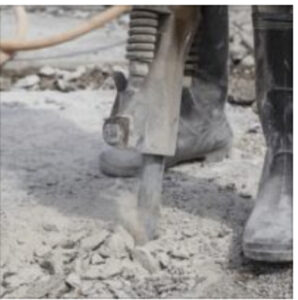Concrete scanning is provided by many companies, and it is a critical step in ensuring that construction projects are executed safely. But there are questions that can pop up about what concrete scanning is and how it works. We’ll be clearing up the confusion now. Here are a few of the questions you may have about concrete scanning.
What is Concrete Scanning?
Concrete scanning is a process that helps find hidden materials inside of concrete slabs. It is often done with ground-penetrating radar (GPR).
What Can Concrete Scanning Find?
This process can find many materials, including electrical conduit, post-tension cables, rebar, as well as voids. Structural review is another area in which concrete scanning can be used.
When Does Concrete Need to Be Scanned?
As long as you scan your concrete before you start doing any destructive work on the premises, you should be good to go. Scanning should always be done prior to doing any cutting, coring, or drilling, all of which can negatively impact the strength of the concrete.
Why Does Concrete Need to be Scanned?
When you get concrete scanned, all of the important components of that concrete get marked. Doing this helps minimize the amount of damage that items like conduit and rebar sustain while getting all of the destructive tasks completed.
Why is Concrete Scanning a Concern for Safety?
By scanning concrete, you’re able to detect important structural pieces that are inside of concrete slabs. By finding these areas prior to doing destructive work, you make it easier to avoid those spots, which helps maintain the structural integrity of the concrete.
It can be a serious danger if things such as post-tension cables and rebar get damaged. People can get hurt or even killed on the worksite. That’s why you shouldn’t take any unnecessary risks on the construction site, and instead get scanning done so you know which spots to avoid.
How Does Concrete Get Scanned?
Ground-penetrating radar (GPR) is what is used to get scanning done. Signals get sent inside of the concrete with the help of a special device. Then, the signals get sent back, and the patterns will change based on whatever materials are found inside of the concrete and how deep those materials are. A professional will know how to use these different signals to determine what the materials are and where they can be found.
Concrete Visions Will Get The Job Done Right
Concrete Visions has been working with clients for over 25 years. Our G&M Services installers are certified with the industry’s major firestop product manufacturers. As part of our firestop service, we can assess abnormal field conditions and, with the manufacturer’s technical support assistance, provide engineering judgments in a timely fashion to comply with contract specifications. Our Field Mechanics undergo ongoing training, including mandatory monthly safety meetings, weekly Toolbox Talks where safety and equipment information is shred, and trainings on safe work standards and safety best practices.

